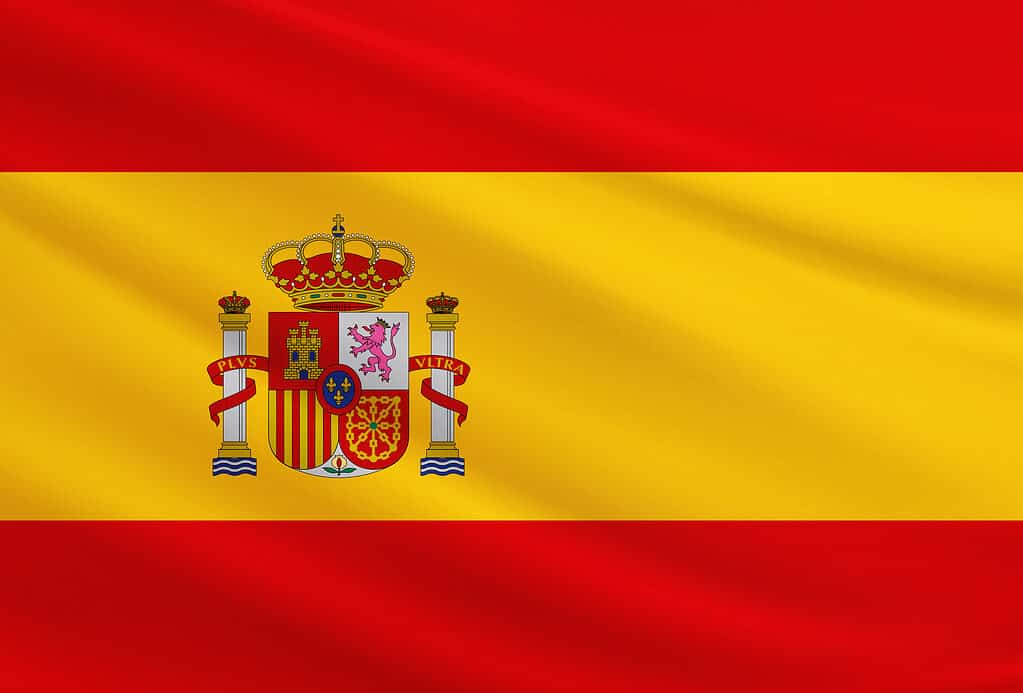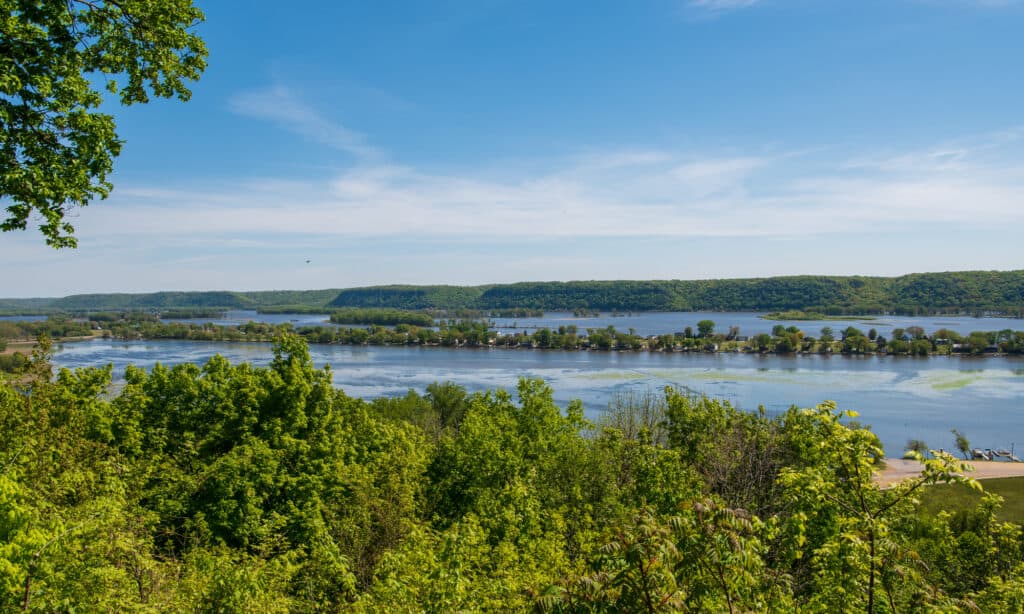The Mississippi River is one of the greatest rivers in the United States. Running from Itasca State Park in Minnesota all the way through Louisiana into the Gulf of Mexico, the Mississippi travels further than most countries span. Throughout its history, many people groups have lived along it, and some have even claimed the entire thing as their own. Today, we will discover every country that has claimed the Mississippi, plus who currently claims it. Let’s get started!
Who Has Claimed the Mississippi River?
As is well known, the French were the first to try and claim the entire length of the Mississippi River, although claiming and settling the Mississippi are two different things!
France

In the early 18th century, the French claimed the Mississippi River and the surrounding area as part of their North American territory.
©iStock.com/Olivier DJIANN
In the early 18th century, the French claimed the Mississippi River and the surrounding area as part of their North American territory. The French had been interested in the region for some time. They began establishing settlements along the Mississippi River in the early 1700s when Rene Robert Cavelier, Sieur de La Salle took an interest in the region. After exploring the river with 22 men, he reached the Gulf of Mexico in 1682, raised a French flag, and claimed all the lands drained by the Mississippi for France. While this declaration wasn’t “real” ownership, it did establish France as the first colonial power to “claim” the Mississippi River.
The French were primarily interested in the Mississippi River because of its potential as a trade route. The river flowed through the heart of North America, connecting the Great Lakes to the Gulf of Mexico, and it provided the French with access to a vast network of Native American trading networks. Since the French had some of the most extensive fur networks across the New World, the Mississippi offered them an easy way to transport them from Canada to the Gulf of Mexico.
Spain

France handed power of the Mississippi River over to Spain in the aftermath of the French and Indian War.
©Osman Bugra Nuvasil/Shutterstock.com
France was the original European power to claim the land the Mississippi River travels through, but they eventually handed power over to Spain in the aftermath of the French and Indian War, although Spain had officially held the land for a few months already.
During Spain’s rule of Louisiana (the greater region, not the state), uprisings and cultural differences abounded, resulting in quite a few crises that needed to be quelled. After a few decades of rule, however, Spain eventually made peace with some of the residents in New Orleans and established a type of order and structure that didn’t exist prior. At the same time, Spain was more than happy to leave the “wilderness” lands as a frontier exchange for furs and other goods brought by Native Americans.
After four decades of rule, however, Spain eventually handed the territory back to the French (in the secret Treaty of San Ildefonso). Spain’s rule was relatively stable, albeit short.
Native Americans on the Mississippi River
While Rene Robert Cavelier, Sieur de La Salle may be the first colonial explorer to claim the Mississippi River, he certainly wasn’t the first person to discover, explore, or even establish settlements along the river. That right belongs to the Choctaw, Chickasaw, Quapaw, Osage, Caddo, Natchez, and Tunica tribes who occupied lands in the Lower Mississippi, and the Sioux, Sauk and Fox, Ojibwe (or Chippewa), Pottawatomie, Illini, Menominee, and Ho-chunk (or Winnebago) tribes who occupied lands in the Upper Mississippi.
The settlements were often located in areas with fertile soil and access to waterways and allowed extensive use of the river as a food source, travel medium, and communication pathway. Through the use of the Mississippi River, Native American tribes developed thriving communities and cultures that still exist today.
By 1830, however, nearly all of the Native Peoples living east of the river were extirpated as a result of the Indian Removal Act of 1830. There are still portions of Native Americans living along the Mississippi River, notably the Choctaw, who are the most populous tribe in the state of Mississippi and are sometimes referred to as “the original Mississippians.”
Selling the Mississippi River to the United States

The Louisiana Purchase was a land deal between the United States and France in 1803.
©Ralf Broskvar/Shutterstock.com
As many Americans may remember from school, France eventually sold its land holdings in the New World to other nations. The land transaction from France to the United States is known as the Louisiana Purchase, although it was much larger than just Louisiana as we know it today.
The Louisiana Purchase was a land deal between the United States and France in 1803, in which the U.S. acquired approximately 827,000 square miles of land west of the Mississippi River for the sum of $15 million. The land stretched from the Mississippi River to the Rocky Mountains and included the present-day states of Arkansas, Missouri, Iowa, Oklahoma, Kansas, and Nebraska, as well as parts of North Dakota, South Dakota, Minnesota, Colorado, Montana, and Wyoming. The Louisiana Purchase nearly doubled the size of the United States and was considered one of the greatest land deals in American history.
Conclusion
The French’s claim of the Mississippi River, its transfer to Spain, its transfer back to France, and its subsequent sale to the United States set the stage for the current landscape and culture in the Mississippi Valley region of North America. Although the French gained control of the river, the Native Americans were the first to establish settlements along it, and their legacy remains to this day. Despite the French’s claim, the Mississippi River and the Native Americans who lived along it remain a source of pride and culture for many in the United States.
Up Next:
- What Lives At The Bottom of The Mississippi River?
- How Was The Mississippi River Formed?
- What Happens When the Mississippi River Freezes Over?
The photo featured at the top of this post is © iStock.com/Jon Rehg
Thank you for reading! Have some feedback for us? Contact the AZ Animals editorial team.






